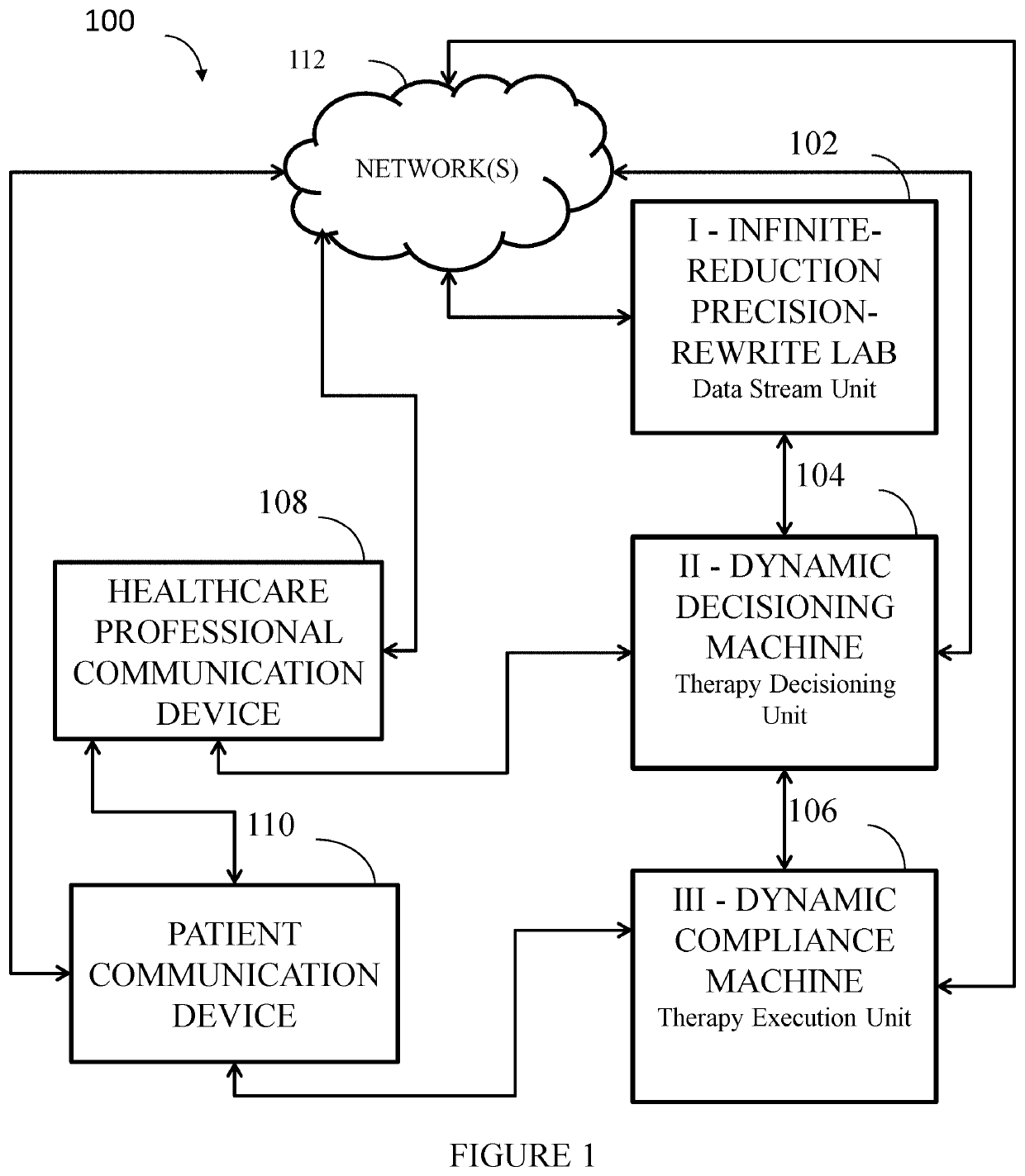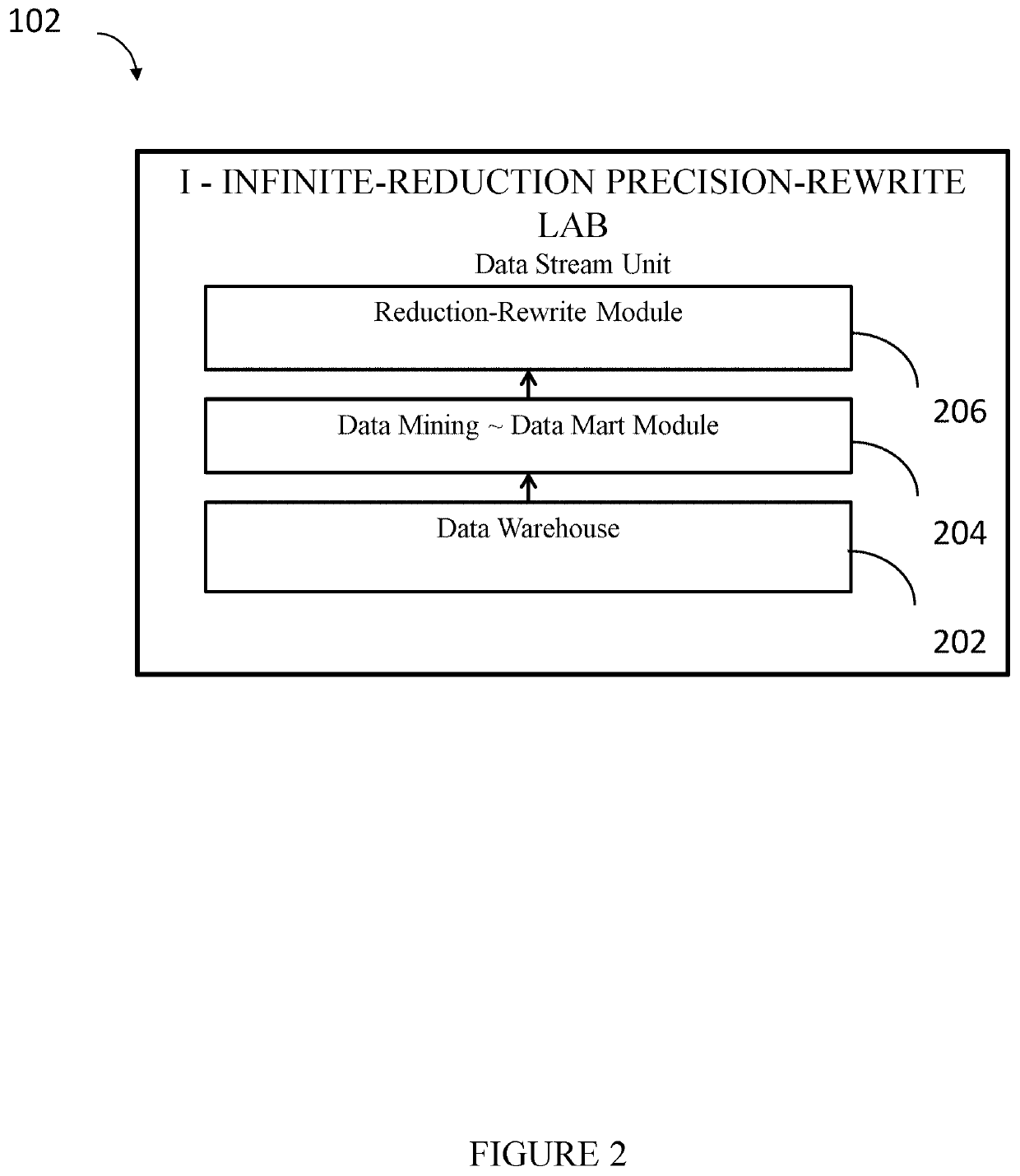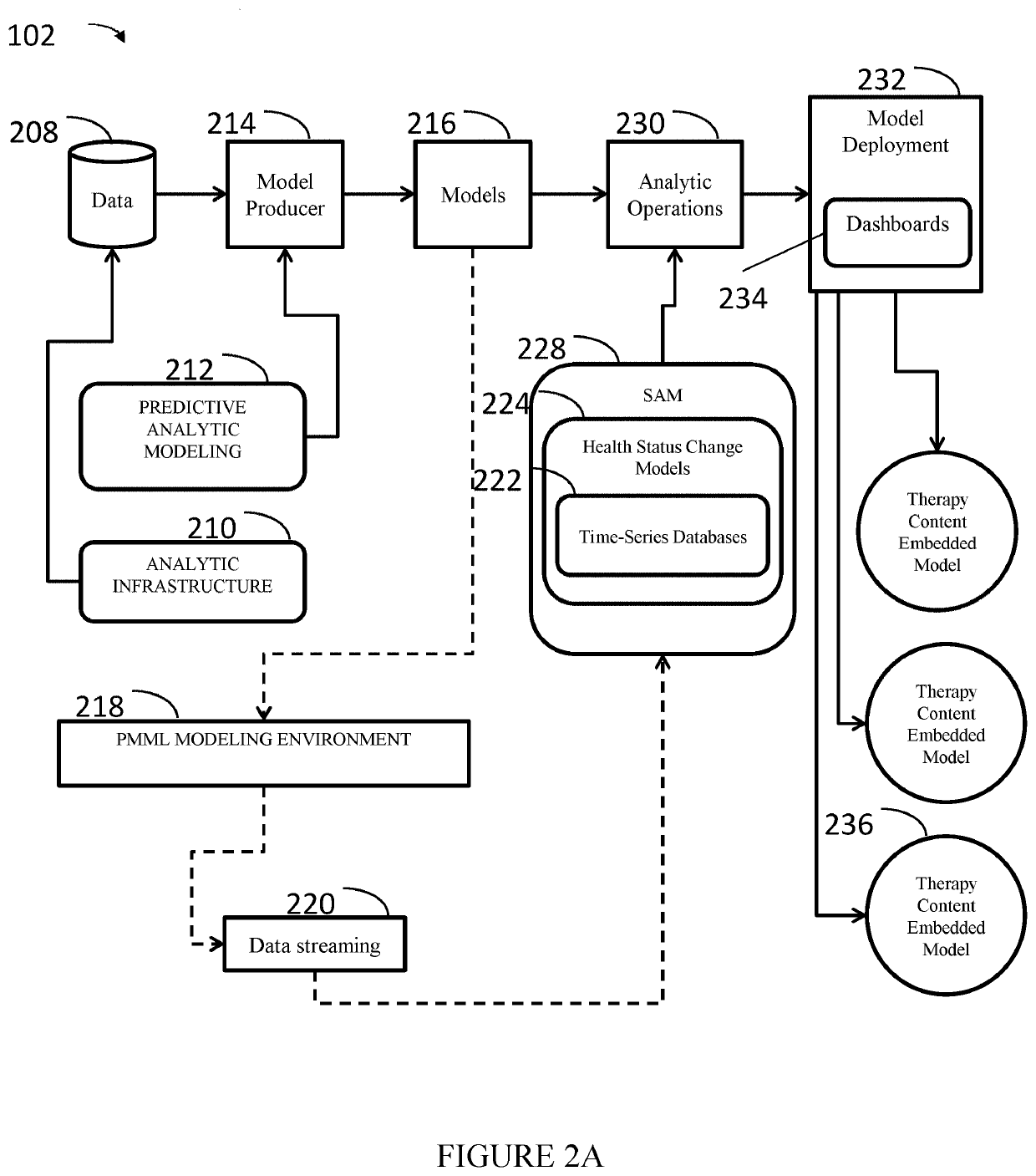The lack of a standard or valid method for measuring or predicting per se is a major barrier to treatment adherence and compliance research, and in the case of
chronic disease, a hurdle to effective long-term interventions.
Because of the difficulties in measuring therapy adherence or compliance, no estimate of treatment adherence, non-adherence, compliance or non-compliance, or predictors thereof, can be generalized.
Health-related social needs increase the risk of developing chronic conditions and reduce individuals' ability to manage these conditions.
Historically, however, patients' health-related social needs have not been addressed in traditional healthcare delivery systems.
Many health systems lack the infrastructure and incentives to develop systematic screening and
referral protocols or build relationships with existing
community service providers.
A missing critical factor has been the absence of
data analysis and insights from the patient's perspective—pattern-of-life activities within the context of the social determinants of health and their root causes.
As a result, patients do not view all prescribed therapies as necessary for patients' best interests.
Because identifying health inequities involves normative judgment, science alone cannot determine which inequalities are also inequitable, nor what proportion of an observed inequality is unjust or unfair.
The consequence of such holistic view, from a national perspective, impacts unfairness in the immediate visible circumstances of peoples' lives, through their access to health care, schools, and education, their conditions of work and leisure, and their homes, communities, towns, or cities, and as a result, their chances of leading a flourishing life.
This is challenging, both conceptually and empirically, when trying to attribute
causality and demonstrate effectiveness of action on health equity.
In addition, a few determinants were identified that, while they had a strong plausible relationship with health inequities, still lacked evidence on what could be done to effect change.
As to what constitutes evidence when it comes to the social determinants of health, the Commission recognizes two linked problems: the nature of the intervention and the lack of evidence in areas where it matters.
There are gaps inevitably, particularly in low- and middle-income countries, possibly because the information does not exist, was not published in an accessible manner, or is not available in English (the working language of the Commission).
Individuals are unlikely to be able to directly control many of the determinants of health.
The evidence of health-impacts often is not available, because of the long causal pathway between the implementation of a health project, program, or policy and any
potential impact on
population and
individual health, and because of the many
confounding factors that make the determination of a causal pathway link difficult.
In addition, providing a comprehensive review of the evidence base is not simple.
Non-adherence and non-compliance are likely with respect to chronic diseases in every situation in which patients are required to administer their own treatment, since almost everyone has difficulty adhering to and complying with medical recommendations, especially when the advice entails self-administered care.
Further, chronic diseases are burdened with the risk that
poor adherence and compliance increases with the duration and complexity of treatment regimens, together with the long duration (typically lifetime) of the
chronic disease.
However, standard analysis of MCC does not yet include the host of factors represented by the social determinants of health.
The absence of social determinants in the analysis of MCC further complicates the many complex issues that dovetail with the challenges of defining MCC.
There are no clear standard answers to these questions, and as a result, period
prevalence rates are not sufficient to define MCC.
MCC result in numerous adverse
health outcomes, increased health care needs, and subsequently higher medical costs.
As the number of chronic conditions in an individual increases, the risks of the following outcomes also increase: mortality, poor
functional status, unnecessary hospitalizations, adverse
drug events, duplicative tests, and conflicting
medical advice.
Managing MCC is quite complex.
Although specific ICD codes may not have been assigned to such signs symptoms and syndromes, they nevertheless can cause considerable suffering and require health care.
However, the large percentage of people with MCC has added a layer of complexity to developing prevention and intervention strategies.
Another issue is whether to consider many infectious diseases as chronic conditions.
These conditions, and their co-occurring illnesses, encumber all of the management challenges of important noninfectious diseases such as
coronary heart disease,
cancer, diabetes, or
stroke-related disability.
They can be costly and deadly.
Individuals with MCC have faced substantial challenges related to the out-of-pocket costs of their care, including higher costs for prescription drugs and total out-of-pocket health care.
The confluence of MCC and functional limitations, especially the need for assistance with
activities of daily living, produces high levels of spending.
Functional limitations can often complicate access to health care, interfere with self-management, and necessitate reliance on caregivers.
As a result, there is a challenge of designing care around specific conditions so as to avoid defining patients solely by their
disease or condition.
The combined effects of increasing
life expectancy and the aging of the
population will dramatically increase the challenges of managing MCC among the burgeoning
population of older persons.
In addition, insufficient attention has been paid to the services and support required to meet longer-term needs of those with MCC to enable them to live as well as possible in
community settings.
Interacting factors impacting adherence, and compliance include attributes of the patient influenced by the social determinants of health, such as poor health literacy, lack of comprehension of treatment benefits, the cost of prescription
medicine, the complexity of modern medication regimens, poor communication between the patient and the individual's healthcare provider, the occurrence of undiscussed side effects, and the lack of trust between the patient and the patient's healthcare provider.
Moreover, 33%-69% of all
chronic disease-related hospital admissions in the United States were due to
poor adherence to and / or compliance with instructions for self-management of chronic
disease.
Poor or non-adherence or compliance contribute to annual indirect costs exceeding $1.5 billion in lost earning, and $50 billion in lost productivity.
The application of Medical
Informatics faces several challenges, including the context of the social determinants of health, the sources of data, the types of data to be used as measures of health, the quantification of social determinants data, and limitations of the analytic tools.
Medical
Informatics approaches to analytics, particularly
predictive analytics, are challenged by the interweaving into the fabric of social determinants of
health data evidencing the context of such determinants.
Another challenge for the application of Medical
Informatics is that data evidencing patterns-of-life and their context must be located, assembled, and analyzed.
Inappropriate inferences or bias can be drawn from large-scale survey data, which can lead to faulty “representativeness” of the survey data and its
impact on conclusions about the wider population.
All statistical surveys, whether based on samples or attempted complete enumerations, are subject to potential inaccuracies.
These risks include errors in conceptual formulation, ambiguities in definition and in the questionnaire, faulty classification, interviewer variability and bias, respondent bias and variability, biases from nonresponse or incomplete coverage, mistakes in editing, and tabulation errors.
The manner in which the survey sample is selected, the manner of the sample design, the implications of the selection process, and the way the survey is implemented may be sources of bias.
Additional sampling bias can arise from the practice of “convenience sampling” aimed at avoiding remote or inaccessible population areas or from the use of an inaccurate or inappropriate sampling frame.
There also are potential sampling biases that arise in the process of survey implementation, such as nonresponse or measurement errors related systematically with target variables and errors in recording or
data entry.
In addition, large-scale surveys may result in bias when converted to outcomes for individuals.
Moreover, the scope, focus, and measurement approaches with large surveys vary across surveys and over time, limiting the scope for comparisons.
These surveys are expensive to conduct and tend to be implemented only periodically.
The construction of different measures of living standards is a source of sampling bias.
There are conceptual, as well as practical, differences among different measures of living standards making it difficult, if not impossible, to establish the “best” living standards measure.
Consumption data as a measure of living standards, like large-scale surveys, also are expensive to collect and are susceptible to measurement error.
Arguably, income as a measure of living standards is an inferior measure, not only because of measurement challenges, but also because for most households the fluctuation in income over time does not imply commensurate changes in living standards.
However, results have been shown to be sensitive to the choice of assets and household characteristics that are included in an asset index.
Approaches to quantifying such data are challenged initially by having been based on data sourced from large-scale household surveys.
In the absence of service-specific
unit cost estimates, many studies have restricted their attention to binary indicators of whether a person used a particular healthcare service or not.
The diabetes global epidemic challenges healthcare providers to develop novel strategies to prevent and treat this life-long disease.
City dwellers are at especially high risk, because they tend to be less physically active and are more likely to be obese as compared to their rural counterparts.
People with diabetes together with multiple chronic conditions report a number of barriers to self-care, such as
physical limitations, lack of knowledge, financial constraints, logistics in obtaining care and the need for social and emotional support.
While the presence of diabetes-“concordant” conditions (such as sharing the same management goals), tends to be positively associated with quality of care, certain “discordant” comorbidities (such as depression and
arthritis)
impact diagnosis and
treatment options, posing barriers to lifestyle changes or alterations and self-care behaviors recommended for
diabetes management.
Depression also is a well-recognized
comorbidity of diabetes, and diabetic patients with depression have poorer adherence to self-management behaviors compared with those without depression.
Non-Hispanic Blacks also are more likely to underreport their
depressive Symptoms, raising concerns that the presence of depression in Non-Hispanic Blacks may be under diagnosed and undertreated.
Minorities also have been found to have a poorer adherence to medications and less frequent preventive
health screening, which may result in more advanced disease at presentation.
Lack of
healthy food stores, lack of places to exercise and increased psychosocial stressors related to crime or limited social cohesion have been linked to poor
health outcomes.
“Inferior” neighborhoods also have been associated with increased smoking, physical inactivity and poorer control of
blood pressure, which can contribute to the development of diabetes and its complications.
Management of chronic diseases can also be more difficult in low socioeconomic areas.
Price differences are greater in poorer compared to wealthier neighborhoods, low-income communities have fewer pharmacies, groceries stores and supermarkets, and consequently, access to medications and healthier foods is limited in
low income and minority neighborhoods.
Compared to Non-Hispanic Whites, minorities with diabetes often lack health insurance.
Among Hispanic patients with diabetes, the lack of insurance has been associated with higher rates of microvascular complications.
Studies also have shown that the quality of care in disadvantaged patients with diabetes is inferior compared with more affluent individuals.
Even in countries with universal health care, studies have shown that racial / ethnic minorities receive inferior quality of health care.
There is no direct evidence from a randomized controlled trial or observational trial evidence on the cost-effectiveness of screening.
However, economic modeling studies have suggested that targeted opportunistic screening for
prediabetes, as well as diabetes, would be cost effective.
There is no tool for identifying people at high risk of
prediabetes or diabetes based on lifestyle modification by changing or altering mSDOH, including mSDOH attributable to patient persona, personal preferences and other patient-centric characteristics.
However, it remains unclear how
effective interventions are in modifying risk factors and which chronic diseases would benefit.
 Login to View More
Login to View More  Login to View More
Login to View More 


